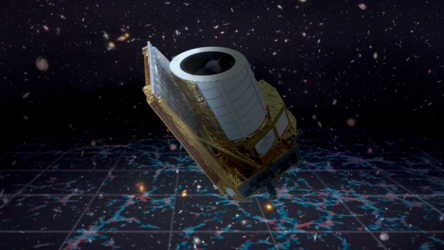Shaky times for the SOURCE CubeSat
In brief
The Stuttgart Operated University Research CubeSat for Evaluation and Education, or SOURCE for short, is a mini-satellite designed and built by students taking part in the third cycle of Fly Your Satellite! Its ambitious mission will see it operate around 500km above Earth’s surface to test several technologies, as well as conducting atmospheric measurements during re-entry. However, first the satellite and its team must undertake a series of intensive tests to maximise their mission’s chances of success. Most recently, from 6 to 10 February 2023, a group of SOURCE students travelled to the CubeSat Support Facility (ESEC-Galaxia, Belgium), for what may have been their biggest challenge to date.
In-depth

SOURCE boasts advanced solar panels that use a sophisticated carbon-fibre reinforced polymer substrate. Impressive sounding, but will it be able to survive the intense vibrations experienced during a rocket launch? That is what the students were tasked with finding out.
For this test, the team built an almost exact-copy of the SOURCE satellite, in order to avoid risking damage to the actual spacecraft. This was the first time the students had conducted assembly to this standard, and there was understandably a steep learning curve to overcome. Despite this, the students worked hard and produced everything required. "A big lesson learned was that we needed a lot more time for the preparation,” explained a participating student, “so the assembly could have been done more accurately and we could have had more time for testing at the facility."

SOURCE’s size presented a particular challenge. Although CubeSats are naturally small, SOURCE itself is a 3U+, meaning it is three regular CubeSat units combined, with the “+” indicating that it includes an extra cylindrical module nicknamed “the tuna can”. SOURCE is fitted with a plethora of payloads, including two cameras, a smart heater, experimental thin-film solar cells, a 3D-printed experimental module, and sensors to measure atmospheric properties during re-entry. SOURCE is, in fact, the largest CubeSat tested at the CubeSat Support Facility to date.
The SOURCE model was loaded onto a special testing platform, which applied severe vibrations along each axis, simulating a rocket launch. Six runs were planned, but unfortunately the solar panel retaining mechanism failed after run number four. The rest of the test had to be cancelled as a result.
The students must now work out exactly want went wrong, and how to rectify the issue, along with other anomalies raised during the tests. Although it may seem like a failure, this is an important part of the testing procedure – it is better for problems to occur during testing rather than launch! The students have gained a wealth of experience, have learnt valuable lessons on system design, and are determined to improve SOURCE to make it better than ever.
"Despite many problems and an incomplete test, we had a productive and enjoyable week,” explained a SOURCE student. “We were able to take away a lot of new technical information about SOURCE and the handling of CubeSats, as well as personal experience of ESA's approach to testing. We look forward to coming back to complete the test!"
Keep up-to-date with all Fly Your Satellite! news here.


Access the video














 Germany
Germany
 Austria
Austria
 Belgium
Belgium
 Denmark
Denmark
 Spain
Spain
 Estonia
Estonia
 Finland
Finland
 France
France
 Greece
Greece
 Hungary
Hungary
 Ireland
Ireland
 Italy
Italy
 Luxembourg
Luxembourg
 Norway
Norway
 The Netherlands
The Netherlands
 Poland
Poland
 Portugal
Portugal
 Czechia
Czechia
 Romania
Romania
 United Kingdom
United Kingdom
 Slovenia
Slovenia
 Sweden
Sweden
 Switzerland
Switzerland

























